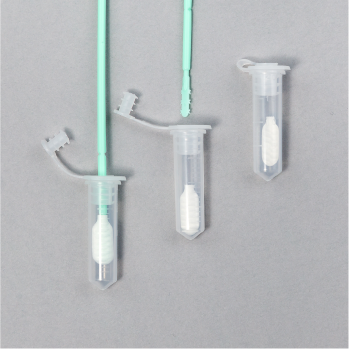Buccal DNA/RNA Sampling, Stabilization & Extraction
1. Are the Isohelix buccal swabs easy to use?
The swabs are designed with a small flat head and strong handle allowing pressure to be applied easily to the inside of the cheek. The surface of the swab has been designed to remove buccal cells from the inside of the cheek without causing discomfort.
2. Is stabilization necessary for swab samples?
If there is a delay of more than a day or two between collection and processing of samples, there could be significant degradation of DNA. In this case, for best results samples should be stabilized during transit and storage.
3. How long is DNA stabilized for when preserved with BuccalFix/Dri-Capsules?
Samples can be kept stable for up to 2.5 years at room temperature in BuccalFix buffer, or 3.5 years using Dri-Capsules.
4. How do you isolate the DNA from the swab?
Our DNA Isolation Kits are optimized in terms of yield and handling for use with the DNA buccal swabs. The kits use either spin column or precipitation methodologies. We also supply a quick release DNA kit (BEK) for straight to PCR applications. The swabs are also suitable for use with other DNA isolation protocols and kits.
5. What yield of DNA will I get from a swab?
The expected yield is 1-10µg DNA in adults.
6. Is the DNA suitable for PCR reactions?
The isolated DNA is of high quality and suitable for all types of PCR including multiplex and rtPCR reactions.
7. What other downstream applications can the DNA be used for?
DNA collected and isolated using Isohelix products can be used for a wide variety of applications, including SNP genotyping, sequencing (Sanger & NGS), microarray, and others.
8. Are swabs suitable for use with children or animals?
For smaller infants and animals, we recommend using our range of mini swabs that are smaller than the SK range and intended for this purpose.
9. Can buccal swabs be used to collect DNA from other sources too?
Our swabs have been specifically designed to collect buccal cells or saliva from human cheek linings, but they are also used routinely to sample various tissues from other animal sources as well. If the swabs are to be used for other human tissue sources, the collector assumes liability.

